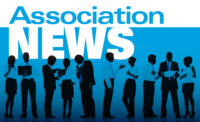 Kathy Seabrook, president of the American Society of Safety Engineers (ASSE), presented an overview of the top global safety and health trends to watch in 2014 on Wednesday, May 7 at an event sponsored by ASSE – “Occupational Safety & Health in Global Workforce Sustainability.” The half-day meeting was held at the National Press Club in Washington, DC.
Kathy Seabrook, president of the American Society of Safety Engineers (ASSE), presented an overview of the top global safety and health trends to watch in 2014 on Wednesday, May 7 at an event sponsored by ASSE – “Occupational Safety & Health in Global Workforce Sustainability.” The half-day meeting was held at the National Press Club in Washington, DC.
“The next big things,” according to Seabrook:
Safety and sustainability integration: To date, safety metrics (other than injury rates) have seldom been used by companies in their annual sustainability activity and achievements reports. Sustainability has long been viewed as an environmental issue. That’s changing, said Seabrook. The investment community, which is pressing companies on their sustainable business models, is becoming more interested in “going beyond green” to examine a company’s labor practices, which include the conservation of human capital (which is where safety and health come in).
Get accustomed to seeing more emphasis by investors on these acronyms -- ESG (Environmental, Social, and corporate Governance – safety falls in the “social” category of how a company conducts its business), CSR (Corporate Social Responsibility), and ROI (Return On Investment and how it is affected by a company’s sustainability initiatives.)
Business culture leadership is gaining more of an understanding how occupational safety and health risks are in reality business risks – and these risks must be mitigated and managed.
The time is now for safety professionals to pull back on their “cop” and policing duties (but not to give them up) and focus more on becoming business partners who educate CEOs on concepts of safety and health risks “so that CEOs can sleep easy at night.”
The investment community is the biggest driver of the sustainability movement. Investors want companies to be transparent in their governance, disclosure activities, and environmental safety and health reporting. Investors also favor companies that must protect brand reputations, such as many consumer goods, energy extraction and natural resources companies. Getting favorable ratings from investors are companies that conserve resources (including the protection of the workforce) and reduce costs (including the costs of accidents and injuries.
Supply chain management around the world is more scrutinized by investors and NGOs than ever before. This is a direct result of multinationals outsourcing manufacturing of consumer goods such as toys, clothing and electronics to contractors and sub-contractors over whom they have little control, or contact with. One consequence of this laissez-faire business model is the factory fires in clothing operations in Bangladesh and other developing economies.
Investors look at workplace safety as a type of assurance. And risk-free assurances are necessary to support sustainable business models and protect brand reputation.
Investors are increasingly asking companies about their “social orientation.” This includes their client or customer relations, their ability to attract and retain workforce talent, their engagement with their suppliers and contractors, their relations with the communities and countries they operate in, and yes, their ability to protect the safety and health of their workers.
Get to know more about this acronym – SASB – the Sustainability Accounting Standards Board. Former New York City Mayor Michael Bloomberg on May 1 was appointed chair of the SASB. According to the SASB web site: “SASB is establishing sustainability accounting standards for use by publicly-listed corporations in the U.S. in disclosing material sustainability issues for the benefit of investors and the public. SASB standards are designed for disclosure in standards filings to the SEC, such as the Form 10-K and 20-F. Materiality is a fundamental principle of financial reporting in the United States. The concept of materiality recognizes that some information is important to the fair presentation of an entity’s financial condition and operational performance. SASB’s Materiality Map™ looks at 40+ sustainability issues and analyzes their importance in the context of the 80+ industries in SICS.Issues are classified under five categories: Environmental Capital, Social Capital, Human Capital, Business Model & Innovation, and Leadership & Governance. Employee health, safety and wellness are part of the Human Capital category.
ISO 45001 Occupational Health and Safety Management Systems voluntary standard is on the way. The target date for a final standard in 2016. ISO intends for the 45001 standard to replace the widely used OHSAS 18001 voluntary standard, By 2009 more than 54,000 certificates had been issued in 116 countries to OHSAS 18001 or equivalent OHSMS standards. The new ISO safety and health management systems standard could also incorporate aspect of ANSI Z-10, the U.S. version of an OHSMS. Seabrook said ANSI Z-10 is particularly strong in the area of employee engagement and participation. U.S. representatives to the standards-setting work include Seabrook, Jim Howe, Thea Dunmire and Todd Hohn.


